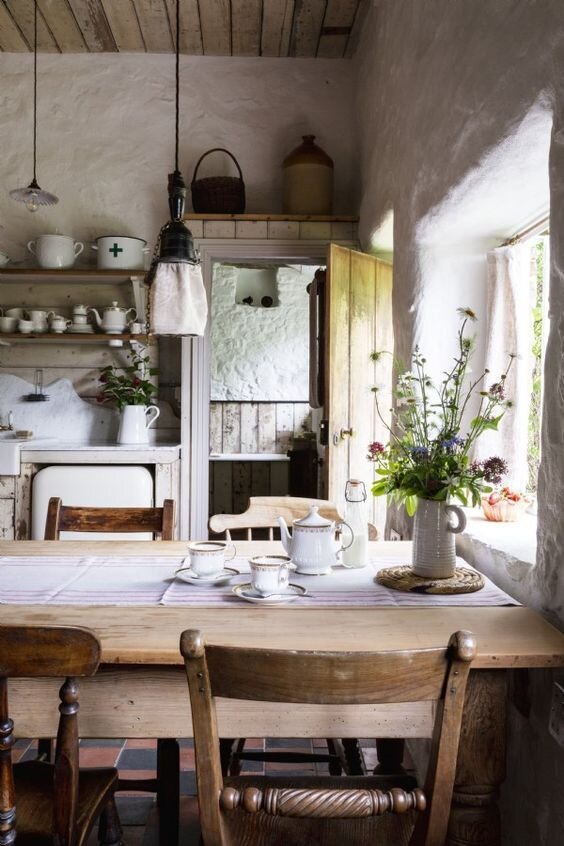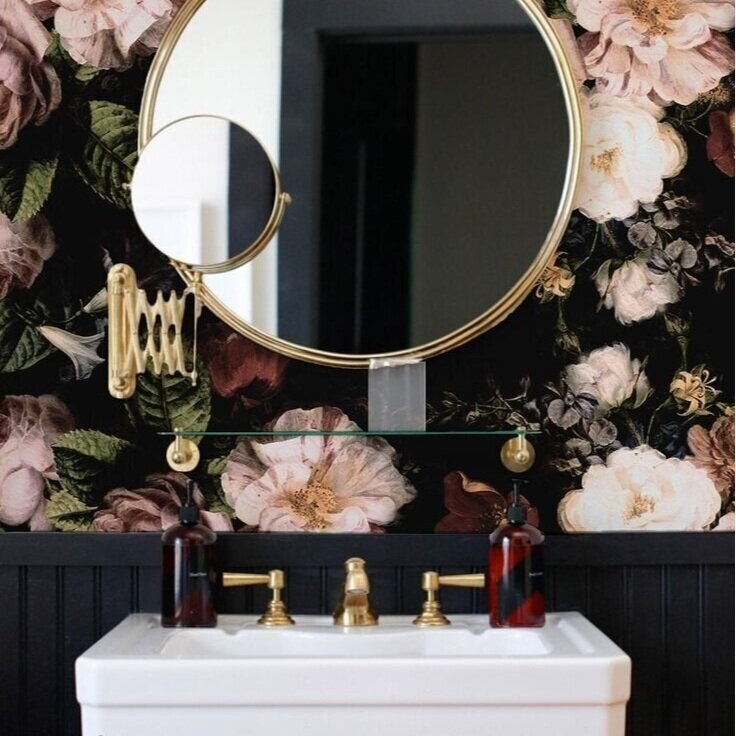How to find interior inspiration for your small space without being so literal
moodboard via homes to love au
Often times when people are looking for inspiration for decorating a room they head to Pinterest, or leaf through magazines, looking for something that already exists, so they can replicate it. But being so literal in looking for interior design inspiration can be really limiting and, frankly, frustrating. Why? Well, because every person or family will use a space differently. Our needs differ greatly depending on stage of life, available budget, the size of your home, personal style, and on and on. It’s part of what makes my work special and a rewarding challenge.
Because of this, I’ve come up with a sort of science to how I approach seeking interior inspiration and then applying that inspiration to a room. I’m going to walk you through my secret sauce today, so you can get unstuck in a current project or have more fun with your next room. (If at the end of this, you’d just rather I handle it, get in touch! I do in-person designing in Barcelona or digital consultations globally.)
Be clear about what you need from the space and identify any non-negotiables before you get carried away with the fun parts
Before designing a space, I like to come at the project from 2 angles: function and feel. Function defines how the space will be used and makes sure it “just works” without effort. Feel, is more about personal style and using aesthetics to capture a family’s essence and values in tangible form.
crop of Robert Lefèvre painting
Thinking through the function of your room, first and in detail, helps you identify the must-haves or prerequisites that are unique to you and your project. It’s important to emphasize that these are the things you can’t go back and solve easily if you realize them late. It doesn’t matter how pretty a room is if it adds to the friction in your life, instead of relieving it.
Identifying what the room needs to do—before what it could look like—gives you a list of concrete things you need to accommodate. Do you have a friend that will need wheelchair access, or out-of-town family that will visit a few times a year, or weight restrictions because your home is on wheels? Use this as the starting point for choosing the layout of the space, picking beautiful and functional furniture, and even weaving these unique attributes into the decorative details.
Once you have these in mind (and preferably written down), we can get down to finding inspiration for your ideal small space design. Here’s how I do it…
It’s not about finding a singular interior design style you like, it’s about identifying the details you’re attracted to—irrespective of its label
Let me give you an example: Say you want to redo your dining room. And you know you like the character of grand French chateau salons, but you’ve got a litter of young kids and pets, so your space has to accommodate them. Maybe you also kinda like the casual vibes of country cottages—but you could leave the doilies. So you try to find an example that already merges those 2 worlds: *types ‘classical french meets casual cottage dining room’ into Pinterest.*
That is awfully specific! Trust me, I’ve tried lol. And even if some examples already do exist, you’re limiting yourself by narrowing your avenues of inspiration. Instead, what I like to do is search all the various styles I’d like to encompass, in their original form. So in this example:
1) french chateau
chateau de la ballue via sharon santoni
2) family dining room
table via birchlane
3) and cozy cottage
via from britain with love
Then sift through the results and see what patterns you find. Maybe it’s the molding that you most gravitate towards in French interiors, you prefer dining rooms with statement pedestal tables, and like the muted color palette of country houses. This way, you understand the details that draw you to each distinct design style. Perfect! That gives some clear direction.
Now, before you move on to hunting down the perfect pieces, do 1 more thing. Answer: is there anything that’s universal across those 3 inspirations? Try not to think in concrete terms. Open your mind up to more subtle queues. Is there a mood or ambiance that they all trigger in you? Maybe it’s low-light or candlelight, or the sense of gathering together…
Jackpot. In addition to identifying specific architectural details and furniture you can incorporate, you’ve also set a north star that can guide you through decisions when you inevitably need to pick details or overcome restrictions (like budget) that you hadn’t yet solved at the onset of the project.
Bonus tip: if you have a clear design direction, but you get stuck, look for inspiration in other creative arts
sherpa jacket via upwest
boucle Miller chair via @trit.house
barcelona colors that inspired our RV design
kitchen decor from our RV renovation
Okay, I’m giving up one of my top tricks here. One way I stay inspired consistently is that I try to ‘sponge up’ the world around me. It can all be fodder for inspiration. I don’t just seek interior design inspiration from interiors or architecture. For example, I love the relationship between fashion and interiors. Did you know there’s a long history of them influencing one another? Indulge me for a second: have you seen those super-wide 18th-century hoop skirts (held up by panniers), well they influenced furniture design out of necessity. I mean, how cool!?
People also often credit nature. Instead of thinking literally about its influence—like cold weather = cozy cottage or seaside city = boho loft—look to its color combinations and the way texture adds to the feeling of a place. Try reinventing what we already take for granted. For example, when reimagining our RV into a tiny home on wheels, we merged the ideas of a country cottage with oceanfront vistas with old-world heritage.
More examples of cross-pollination between fashion, art, and interior design:
Dutch floral painting from Golden Age
TheGoodiesWallpapers via etsy
Dutch fashion designer Peet Dullaert
Cecil Hayes via AD
Look, I know designing a space to be functional and feel good can seem like a daunting task. But like anything else, it’s just a matter of starting somewhere and learning along the way. If you allow yourself to be playful—and inevitably come up with some awful combinations—you’ll eventually start to have a 6th sense, another creative language all your own. By flexing those problem solving and creative muscles, you strengthen them. If after a few attempts, you’d like a trainer to help you get there faster, I’m happy to help guide you. Just email me.
I’d love to see what experiments you come up with. Post your creations on Instagram and tag me @elisa_llera.












